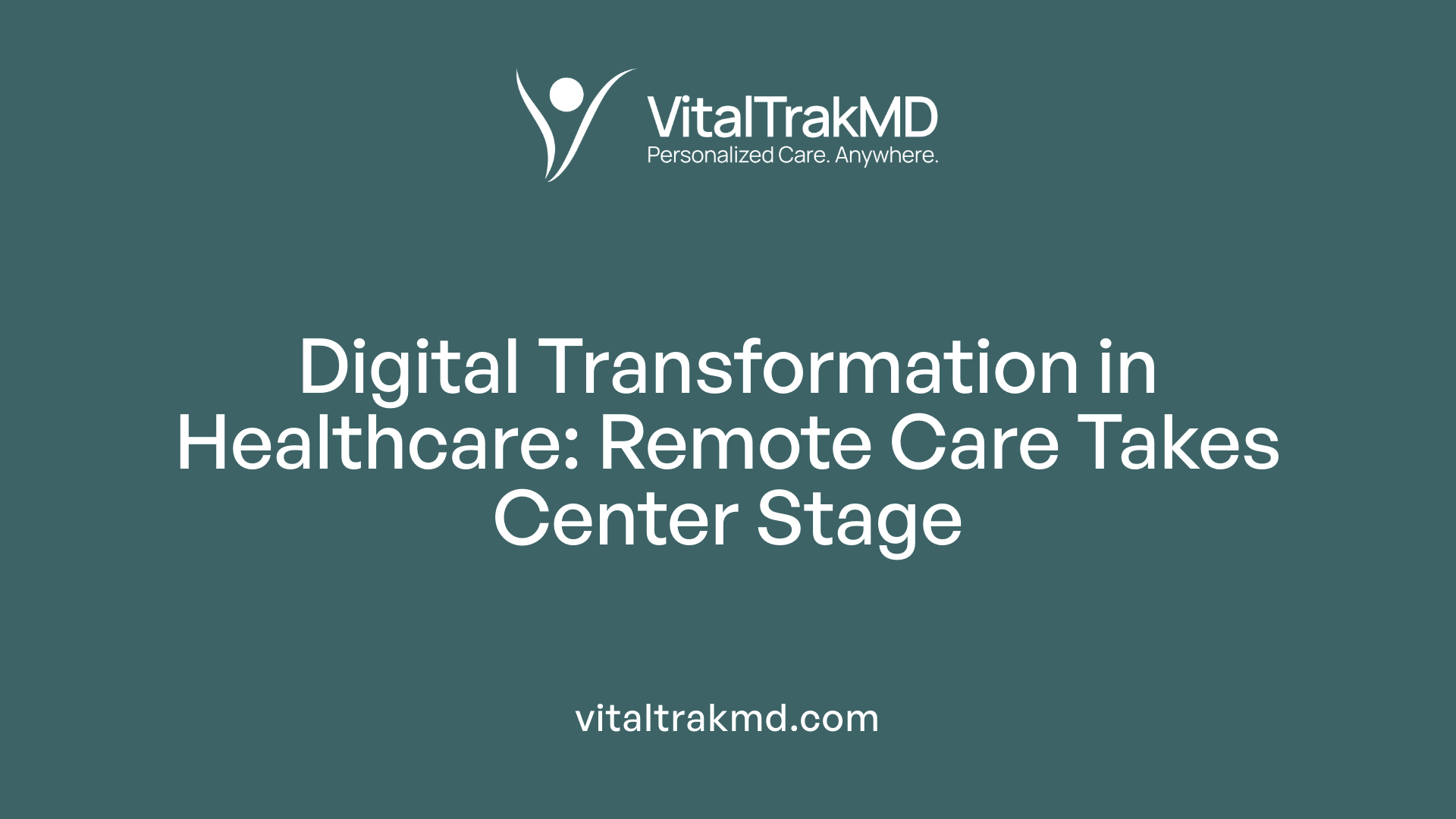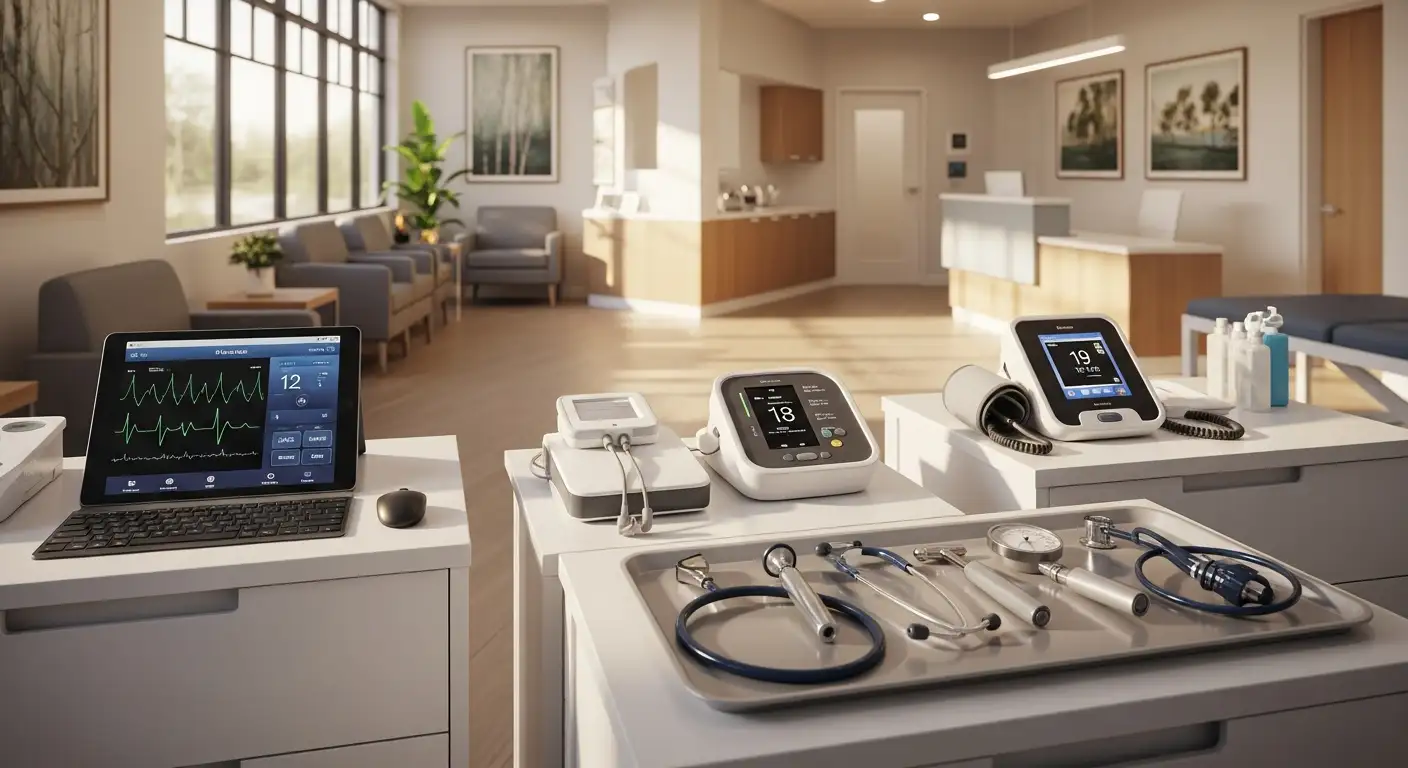Why Hybrid Programs Improve Confidence in Self-Care for Patients

Empowering Patients in the Digital Age
The advent of hybrid healthcare programs, blending in-person care with innovative digital tools, has revolutionized the way patients manage their health. Especially evident during the COVID-19 pandemic, these models leverage technology, remote monitoring, and flexible care pathways to build patient confidence, increase access, and improve overall health outcomes. This article explores the mechanisms, benefits, challenges, and supporting evidence behind why hybrid programs significantly enhance patient self-care confidence.
The Rise of Hybrid Healthcare During the COVID-19 Pandemic

What is the role of digital transformation in healthcare?
The COVID-19 pandemic accelerated digital transformation in healthcare, pushing services to adopt virtual and remote modalities. Telemedicine, remote monitoring devices, and AI-driven diagnostics became central to patient care. Hospitals integrated these technologies to provide continuous, flexible care outside traditional settings.
How have development of hybrid care models evolved?
Hybrid care models blend in-person and digital health services, creating seamless care pathways. These models include virtual clinics, remote hospital-at-home programs, and telehealth-supported outpatient care. For example, Israel’s Sheba Medical Center launched Sheba Beyond, the country's first virtual hospital, offering remote clinics, online rehab, and home hospitalization. Internal medicine programs used remote tools to treat diverse conditions, involving 452 patients and employing vital signs sensors, ECGs, portable x-ray machines, and remote platforms.
What are virtual hospitals and remote programs?
Virtual hospitals combine physical health resources with virtual tech to deliver comprehensive care. These programs utilize telemedicine platforms supported by remote monitoring and AI to manage patient health from afar. Systems like the Datos Health platform facilitate continuous diagnostics and monitoring, enabling care at home with real-time data sharing.
Hospital design is evolving to support this shift, with fewer physical beds and more virtual beds, offering flexible capacity. Nurse stations serve as control hubs for remote communication, while rooms are designed for multi-functionality, prioritizing patient safety and adaptability.
Care pathways are also diversified, including inpatient, outpatient telemedicine, and home hospitalization. These options enable patient-centered care, improving patient experience, privacy, and family involvement. Patients report feeling more engaged and confident, especially when educational resources and support staff are integrated.
How does hybrid healthcare improve confidence and overcome barriers?
Hybrid models expand access for remote and homebound patients, reducing travel and exposure risks—crucial during the pandemic. Supporting patient education on using digital tools, and offering step-by-step guides, improves comfort with telehealth.
Training programs for nurses, combining online modules and simulation, increase clinical confidence in managing deterioration and emergency responses, decreasing the reliance on emergency codes.
While challenges exist—such as resistance from healthcare staff, integration issues, and scaling complexities—the advantages in fostering patient independence and system resilience are significant.
| Aspect | Details | Additional Notes |
|---|---|---|
| Benefits | Increased access, improved patient engagement, cost savings | Supports underserved groups and reduces provider burnout |
| Challenges | Technology barriers, data security, resistance | Requires organizational change and digital literacy efforts |
| Technologies | Teleconferencing, remote monitoring, AI | Enhances timely decision-making and patient safety |
| Education | Patient tutorials, staff training | Promotes trust and effective use of digital platforms |
| Design | Virtual beds, control centers, flexible rooms | Helps hospitals adapt to varying demand |
Overall, hybrid healthcare models are shaping the future of patient-centered, resilient, and accessible health systems, driven by the rapid digital transformation prompted by COVID-19.
Key Technologies and Innovations in Hybrid Care

How does technology contribute to strengthening patient self-care confidence in hybrid healthcare models?
Technology plays a crucial role in boosting patient confidence within hybrid healthcare systems. Accessible tools like mobile health apps, wearable devices, and remote monitoring sensors allow patients to track vital signs, blood glucose levels, and heart rhythms from their homes. This continuous self-monitoring enables patients to feel more in control of their health.
Digital platforms such as telemedicine services and patient portals facilitate real-time communication with healthcare providers. This instant access to professional support reassures patients and encourages active engagement in their care plans.
Advanced technologies like artificial intelligence (AI), the Internet of Things (IoT), and health informatics personalize care and enable early diagnostics. For instance, AI algorithms analyze health data to detect signs of deterioration early, prompting timely interventions.
Features like electronic health records and automated reminders help patients adhere to prescribed treatments and monitor their progress effectively. Step-by-step guides and visual aids enhance their understanding of how to use new devices or access virtual services.
Supporting resources also include tutorials and dedicated staff support, which prepare patients for virtual visits and help them navigate digital tools with confidence.
Overall, these innovations foster a supportive environment that promotes autonomy. Patients gain trust and feel empowered to manage their health proactively, making hybrid care more effective and patient-centered.
Technologies Supporting Patient Confidence in Hybrid Care
| Technology Type | Functionality | Impact on Patient Confidence | Example Devices or Platforms |
|---|---|---|---|
| Remote Monitoring Devices | Continuous health data collection | Enhances reassurance and early detection | TytoCare kits, vital signs sensors, portable x-ray machines |
| Telehealth Platforms | Virtual consultations, education | Builds trust through accessible expert advice | HIPAA-compliant telemedicine apps, secure patient portals |
| AI Integration | Personalized diagnostics, alerts | Supports early intervention and tailored advice | Datos Health platform, AI-based diagnostic tools |
| Digital Education Resources | Guides, visual aids, tutorials | Improves understanding and self-efficacy | Online videos, step-by-step guides |
By integrating these technological tools into care pathways, hybrid healthcare models effectively improve patient engagement and self-confidence. Patients feel more capable of managing chronic conditions, responding to health changes, and staying connected with their healthcare teams from remote locations.
Design and Infrastructure of Modern Hybrid Hospitals

How do hybrid healthcare programs enhance patient self-care confidence?
Hybrid healthcare programs significantly boost patient self-care confidence by combining traditional in-person care with innovative digital tools and remote services. This approach offers a more flexible, accessible, and personalized care experience. Patients are equipped with remote monitoring devices, such as vital signs sensors and ECG monitors, and have access to online educational resources that help them understand their conditions better.
By enabling virtual communication with healthcare providers via telemedicine and secure messaging, patients receive continuous support and guidance. This ongoing engagement helps reinforce their knowledge, build skills, and foster a sense of control over their health. For example, programs like Sheba Beyond in Israel use remote clinics, multidisciplinary online rehabilitation, and home hospitalization to manage various health issues.
The technology-driven nature of hybrid care reduces barriers such as transportation challenges and geographical restrictions, making healthcare more accessible. It also allows for more frequent check-ins and timely interventions, further instilling confidence in patients to manage their health independently.
Overall, hybrid models create a patient-centered environment where individuals actively participate in their care journey, leading to increased trust, engagement, and self-reliance. This empowerment through digital and in-person support ultimately helps patients feel more capable of managing their health in the long term.
Modern hospital design supports this transformation through flexible physical and virtual spaces
Innovative hospital layouts now include fewer traditional beds and more virtual 'beds' supported by advanced technology. These designs feature a nurse station equipped as a control center that manages remote communication and monitoring, ensuring seamless coordination between staff and patients.
Patient rooms are designed for adaptability, supporting multiple functions and prioritizing safety and comfort. Such flexible spaces enhance the hospital's ability to shift capacity quickly, adjusting to demand without the need for extensive physical expansion.
The overall infrastructure emphasizes digital integration, with dedicated zones for telehealth consultations, remote patient monitoring, and virtual rehabilitation. These features collectively support a resilient and efficient healthcare environment.
Considerations for safety and privacy in hybrid settings
Maintaining patient safety and privacy remains a top priority in hybrid hospitals. Digital platforms like the Datos Health platform enable secure remote monitoring and diagnostics, adhering to strict security standards such as HIPAA.
Care pathways are diversified, including inpatient, home hospitalization, inpatient telemedicine, and tele-home hospitalization modes. This diversification aligns with safety protocols to ensure consistent care quality regardless of the setting.
Designs incorporate privacy measures such as secure data transmission, controlled access to electronic health records, and private virtual spaces for consultations. These measures are vital for fostering trust and complying with legal and ethical standards.
In summary, modern hybrid hospital designs are reshaping healthcare delivery by merging physical and virtual environments. They feature adaptable spaces, integrated digital technologies, and rigorous safety and privacy protocols, enabling effective, patient-focused care in a rapidly evolving landscape.
Evidence of Effectiveness: Boosting Confidence through Hybrid Programs

What evidence supports the effectiveness of hybrid programs in boosting patient confidence?
Multiple sources and studies point to the positive impact of hybrid healthcare programs on patient confidence. For instance, programs like Mayo Clinic's Advanced Care at Home showcase high patient satisfaction levels with virtual care, with over 80% of patients feeling comfortable using digital technologies and trusting their care teams. This trust indicates a significant boost in self-efficacy when managing health remotely.
Patients involved in hybrid models often report feeling well-informed about their conditions and are able to contact healthcare providers easily when needed. Such accessibility and clear communication help patients feel more in control of their health, which is a vital component of confidence.
During the COVID-19 pandemic, the management of chronic illnesses through hybrid care demonstrated that patients felt safer and more empowered in handling their ongoing conditions without frequent in-person visits. The preference for digital health tools and remote consultations among patients further supports this, as they tend to feel more engaged and confident in their ability to manage their health.
In addition to patient feedback, clinical outcomes and safety measures indicate that hybrid programs do not compromise care quality; instead, they often enhance patient engagement and satisfaction. These factors combined—positive patient experiences, technological support, improved access, and maintained or improved clinical results—serve as strong evidence that hybrid healthcare models effectively boost patient confidence and self-management skills.
Educational Strategies and Support Systems for Patients
How do hybrid healthcare programs enhance patient self-care confidence?
Hybrid healthcare programs significantly boost patients' confidence in managing their health by combining traditional in-person care with innovative digital tools. This approach offers personalized, accessible care options that empower patients to take an active role in their treatment.
Remote monitoring devices, online educational resources, and virtual consultations enable patients to understand their conditions better and make informed decisions. For example, tools like blood glucose monitors, heart rhythm sensors, and exercise performance trackers provide real-time data, giving patients immediate feedback about their health status.
To ensure patients are prepared to use these technologies effectively, educational strategies are crucial. Providing comprehensive materials that explain what to expect during virtual visits, how to operate digital tools, and the scope of remote care helps set realistic expectations and build trust.
Step-by-step guides, visual aids, and videos further simplify technology use, reducing anxiety and facilitating seamless access to services. Staff support plays a vital role too, offering prior practice sessions and real-time assistance during initial virtual appointments, which enhances patient comfort and confidence.
Moreover, digital literacy training tailored to the patient’s level helps bridge gaps for those less familiar with technology. When patients understand how to navigate telehealth platforms and communicate effectively with providers virtually, they feel more in control.
This combination of education, hands-on practice, and ongoing support creates a supportive environment where patients gain confidence in their ability to self-manage their health. As a result, they are more likely to adhere to treatment plans, recognize warning signs early, and utilize healthcare resources efficiently.
Supporting patient engagement through technology
Patient involvement is further strengthened by utilizing secure messaging and patient portals. These channels allow ongoing communication, appointment scheduling, and access to medical records, fostering a sense of partnership and accountability.
Overall, well-structured educational initiatives and dedicated staff support within hybrid models not only improve healthcare outcomes but also make patients feel empowered, confident, and engaged in their journeys to better health.
| Strategy | Implementation Examples | Impact |
|---|---|---|
| Digital literacy training | Online tutorials, one-on-one tech coaching | Increases comfort and independence |
| Visual aids and step guides | Videos, illustrated manuals | Simplifies technology use |
| Staff-led practice sessions | Mock telehealth visits, troubleshooting help | Builds confidence and reduces anxiety |
| Ongoing support and communication | Secure messaging, follow-up calls | Maintains engagement and reassurance |
This comprehensive support system ensures patients are equipped, confident, and motivated to actively participate in their healthcare, making hybrid models a powerful tool for long-term health management.
Challenges and Future Directions of Hybrid Healthcare Implementation
What are the advantages and challenges of implementing hybrid healthcare models to improve self-care confidence?
Hybrid healthcare models combine in-person and digital care, offering many benefits. These include increased access for patients who are homebound or in remote areas, as well as greater flexibility in scheduling and care delivery. Patients can perform exercises, monitor vital signs, and communicate with providers from their homes, which fosters confidence in managing their health. Such models also promote personalized care through remote monitoring devices and digital education resources.
However, there are notable hurdles. Technological barriers can hinder effective use of digital tools, especially for those with limited internet access or low digital literacy. Data security and patient privacy are also concerns that need ongoing attention. Organizational resistance from medical staff, who are traditionally trained in physical care, can slow adoption and scaling efforts. Additionally, integrating various digital systems into existing healthcare infrastructure presents technical challenges.
To ensure equitable access, strategies such as providing digital literacy training and affordable devices are essential. Developing user-friendly platforms and offering ongoing staff training can help overcome resistance and foster a culture of innovation. As hybrid healthcare continues to evolve, addressing these challenges will be crucial for maximizing its benefits. Combining technological, organizational, and educational efforts can pave the way for a more resilient and patient-centered healthcare future.
| Aspect | Challenges | Solutions |
|---|---|---|
| Technological | Digital divide and lack of access to high-speed internet | Digital literacy programs and subsidized devices |
| Organizational | Resistance from staff trained in traditional methods | Training, support, and demonstrating benefits |
| System Integration | Difficulties connecting diverse digital platforms | Standardized protocols and interoperable systems |
| Patient Engagement | Variability in patient tech skills | Personalized education, step-by-step guides |
| Data Security | Risk of breaches and privacy concerns | Robust cybersecurity measures |
By addressing these areas, healthcare systems can enhance the effectiveness of hybrid models, ensuring they serve all populations efficiently and securely.
Conclusion: The Future of Patient-Centered Care with Hybrid Models
The adoption of hybrid healthcare models is rapidly expanding, driven by technological progress and the need for flexible, accessible care. Hospitals are increasingly incorporating virtual hospital services, remote monitoring, and telemedicine, transforming traditional care into a more patient-centered approach.
Technology continues to evolve, with advanced sensors, AI-driven diagnostics, and user-friendly platforms making remote care more reliable and efficient. This progress boosts trust in virtual services and encourages wider use.
Community engagement and improving digital literacy are crucial for the future success of hybrid care. Educating patients on how to utilize telehealth tools and understanding their benefits can increase confidence and participation, especially among underserved populations.
Ensuring equitable access remains a challenge but is essential. Strategies include providing resources, training, and tailored services to bridge technology gaps, thereby enabling all patients to benefit from hybrid models.
Looking ahead, hybrid healthcare promises a more adaptable, inclusive, and efficient system. By embracing innovation and addressing barriers, healthcare providers can deliver better outcomes and improve patient experiences worldwide.
Harnessing Hybrid Care for Confident Self-Management
As healthcare continues to evolve in the digital age, hybrid models stand out as a transformative approach that empowers patients, improves access, and fosters confidence in self-care. The integration of advanced telehealth technologies, personalized care pathways, and innovative hospital designs creates a flexible environment where patients feel supported and capable of managing their health independently. Overcoming challenges such as digital disparities and resistance from healthcare providers will be essential to ensure that these benefits are universally accessible. With ongoing technological advancements, community efforts to boost digital literacy, and strategic policy initiatives, hybrid healthcare can fulfill its promise of making self-care more accessible, effective, and patient-centered for all.
References
- Designing for flexibility in hybrid care services - PubMed Central
- What Is Hybrid Healthcare? - AC Health
- Preparing patients for hybrid care
- Hybrid education increases nurses' skills in management ...
- What Does a Hybrid Model of Care Mean for Higher ...
- Hybrid Nursing Programs: Pros Cons and What to Expect
- What Is Hybrid Healthcare? | Tools, Benefits, and Solutions
- Designing for flexibility in hybrid care services - PubMed Central
- 5 Reasons to Implement a Hybrid Care Model in Healthcare
Recent articles
Want to Feel Better and Live Healthier?
Join hundreds of patients taking control of their health with personalized care that fits their life – not the other way around.
Rated 4.8/5 by 32+ customers







